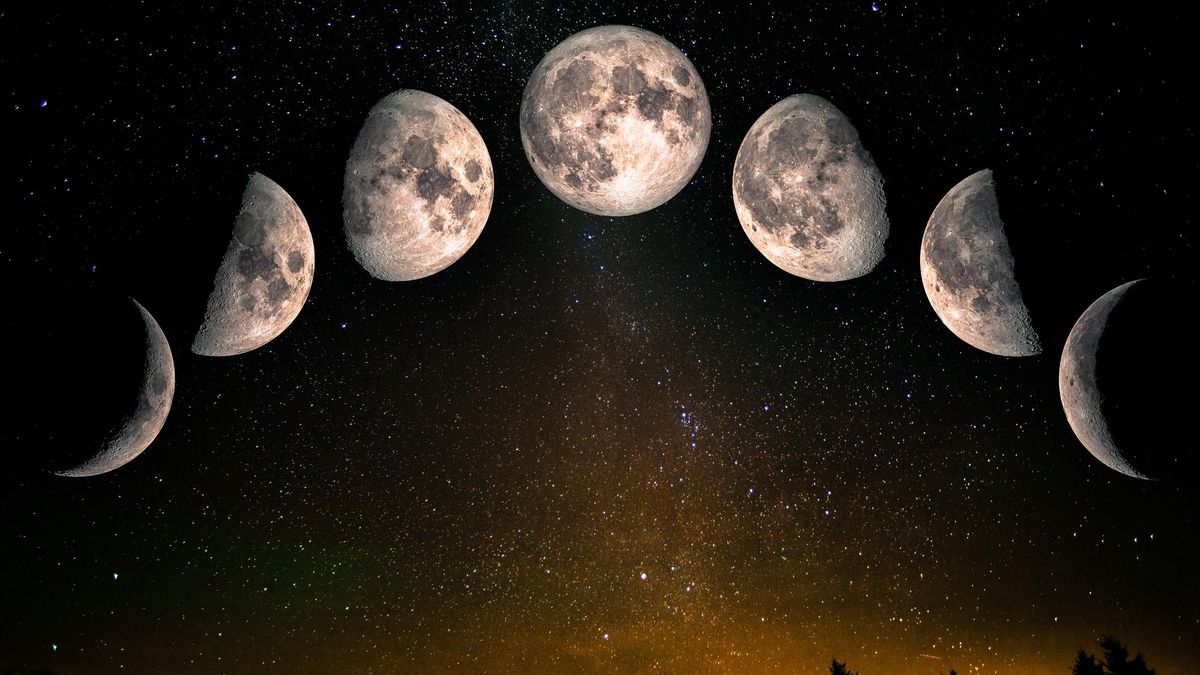The asteroid was discovered on August 7 by the ATLAS (Asteroid Terrestrial-Impact Last Alert System) observatory in South Africa and will be temporarily captured by Earth’s gravity, turning our planet into one of two moons. The phenomenon will last until November 25.
moons of uranus.jpg
The Moon in its different phases.
The Earth will have two moons: what is the phenomenon about?
It was detected in a NASA-funded project aimed at identifying near-Earth objects that could pose a risk of impact. It is worth noting that the asteroid has a diameter of just ten metres, making it a small object compared to other asteroids.
The space rock could be between 5 and 42 meters (16 to 130 feet) in diameter, potentially larger than the asteroid that entered Earth’s atmosphere over Chelyabinsk, Russia, in 2013. The asteroid, which was between 17 and 20 meters (57 to 60 feet) in size, exploded in mid-air, releasing 20 to 30 times more energy than the atomic bomb dropped on Hiroshima, Japan, and generating a brightness brighter than the Sun. Debris from the space rock damaged more than 7,000 buildings and injured more than 1,000 people.
Why it happens
Although the idea of having two moons sounds spectacular, this phenomenon is not new. Earth has already had mini-moons on several occasions. One of the most recent cases was that of asteroid 2020 CD3, a mini-moon that was captured in that year, and before that, in 2006, the so-called 2006 RH120, which also orbited the planet for a limited time.
The presence of minimoons is not a new phenomenon for Earth, but it is rare for them to occur and even rarer for us to be able to observe and study them in depth. Throughout history, the presence of other minimoons has been recorded, although they are generally difficult to detect due to their small size and the short time they spend in orbit.
Where to see the two moons phenomenon
As explained Carlos de la Fuentelead author of the research and professor at the Complutense University of Madrid, to the Space.com portal, the asteroid is too faint to be observed with common telescopes or binoculars.
A different case is that of the professional astronomerswhich, if they have the necessary equipment, will be able to see it through a telescope with a diameter of at least 30 inches, in addition to a CCD (Charge Coupled Device) or CMOS (Complementary Metal Oxide Semiconductor) detector. With these tools, professionals will be able to capture the faint light of a distant asteroid and follow its brief stay around the Earth.
The difference What makes these detectors different from conventional telescopes, which rely on direct observation through lenses, is that they convert light into electronic signals that can be processed by computers to generate detailed images. This technology has revolutionized the study of deep space, allowing astronomers to discover objects such as 2024 PT5.
Source: Ambito
I am an author and journalist who has worked in the entertainment industry for over a decade. I currently work as a news editor at a major news website, and my focus is on covering the latest trends in entertainment. I also write occasional pieces for other outlets, and have authored two books about the entertainment industry.




